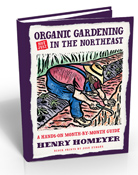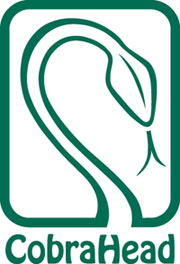Grow Up! Build a Trellis to Use Your Vertical Spaces
Most of us think we need more garden space. But once we have carved out a garden and removed the grass from the lawn or field, it is often difficult to find more space – or the energy – to expand. But growing plants on vertical supports will help you save space in the vegetable garden. Bean tripods are well known, but have you thought about a trellis for your cucumbers or gourds? I recently designed and installed 24 wood-sided raised beds for a demonstration vegetable garden at Home Hill Inn, in Plainfield, NH. Each bed is 4-by 8-feet, and although that may sound like a lot of space, it gets used up quickly. I built some trellises to help grow more vegetables and save space.

trellis
The first trellis I built for was for cukes. It is an A-frame built using conventional 1- by 4-inch pine lumber. I bought pine boards that had already been sanded and primed, then applied a coat of exterior latex white paint. I used 8 boards, 4 on each half of the A-frame (2 legs and 2 cross pieces on each side). I also bought a pair of inexpensive door hinges and some 1-inch galvanized dry wall screws.
On a flat piece of lawn I began by laying out 2 boards, end to end. I attached the boards with the hinges so that later I could stand up them up to make the legs for an A-frame. I repeated with another 2 boards. Then I placed the 2 sets of legs 6-feet apart and connected them with cross pieces on what would become the inside of the A-frame. Using a cordless drill, I attached them with 1-inch screws 18 inches from the bottom of the legs of the A-frame and 18 inches from the top.
I set up the A-frame in the garden bed and attached plastic netting I had bought for the job. The netting is 78 inches wide, and has openings 6 inches by 7 inches. To attach the net I used 1-inch screws on the inside of the A-frame; I put the screws in just half way so that the head of the screw could be used to hook the netting on to, pulling it tight. It took a little experimentation to get the spacing right, but worked slick as a bean.

Arbor Trellis
The next trellis was a bit more work. I wanted to build a trellis for gourds that would allow the vines to go up 6 feet or so, then range across cross pieces like a grapes on an arbor, hanging down inside the arbor. I bought 10 pieces of 8-foot long bamboo, each almost an inch and a half in diameter. They make good sturdy poles.
Using a post hole digger I dug 6 holes, each about 16 inches deep. The arbor is a rectangle approximately 6 feet by 3 feet, fitting nicely inside the 4 by 8-ft bed. Each end of the bed had 2 poles about 6 inches from the end and side of the bed, and 2 were place equidistant between the end poles. I held the poles vertical as I added soil back into the hole, checking it for plumb with a small level. I tamped down the soil in the holes with a shovel handle, then mounded the soil up around each pole.
With the 6 pieces in the ground, I added cross pieces (a foot down from the top of the upright poles) on each long side. I attached the bamboo with copper wire I had stripped out of 14-gauge building wire (I was an electrician in an earlier life, and had some in the cellar). I wrapped the wire around the vertical and horizontal pieces and tightened them up with a pair of pliers. Lastly I added 4 cross-pieces on the top to support the vines and allow the gourds to hand down from.

Bean Tripod
I also built a bean tripod. I went into the woods and cut down 6 maple saplings about 2-inches in diameter at the base; I trimmed each to be 8-feet long. I pushed the poles into the soft earth of the garden bed, and, standing on a step ladder, brought them together and tied them near their tops – where all 3 were touching. I used garden twine, but will go back soon and add some copper wire – I fear the string will rot before the end of summer.
Another way to make a bean trellis is to use four 6-foot (or 8-foot) grade stakes. These are 1-inch by 1-inch hardwood stakes. Drill a hole 2 inches from the top of each that is big enough to insert a length of metal coat hanger. Cut a 6-inch straight piece of the coat hanger, insert it though the holes, and bend the ends. Then stand it up and spread the legs – two on each side.
Peas are traditionally trellised using chicken wire and posts. My only suggestion is this: put in a post every 4 to 6 feet. That will keep the wire from sagging and flopping as the vines get heavy. You can’t put up a sturdy trellis that spans 8 feet or more between posts, though I drive by gardens that try to.
So if you’re short of garden space, think about getting your veggies up off the ground. In other words, grow up!


